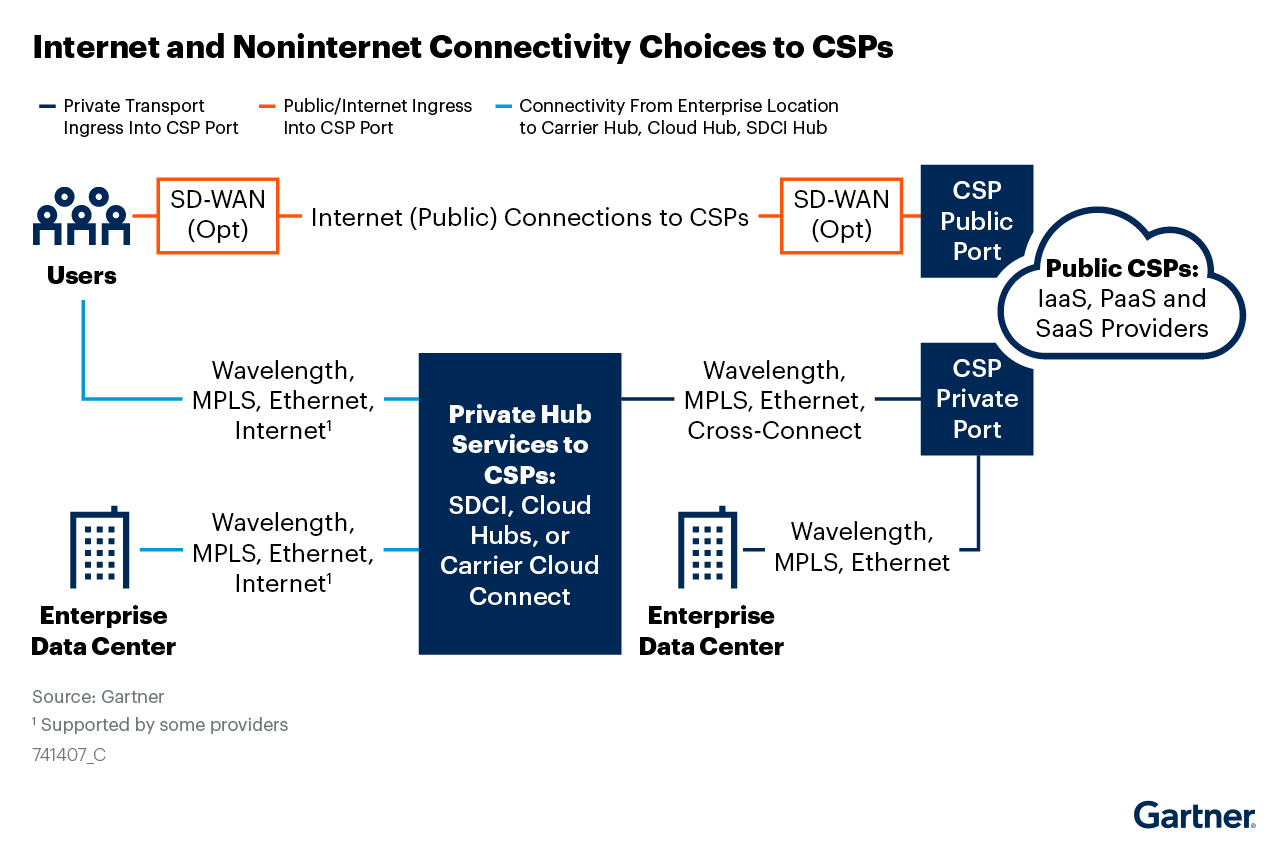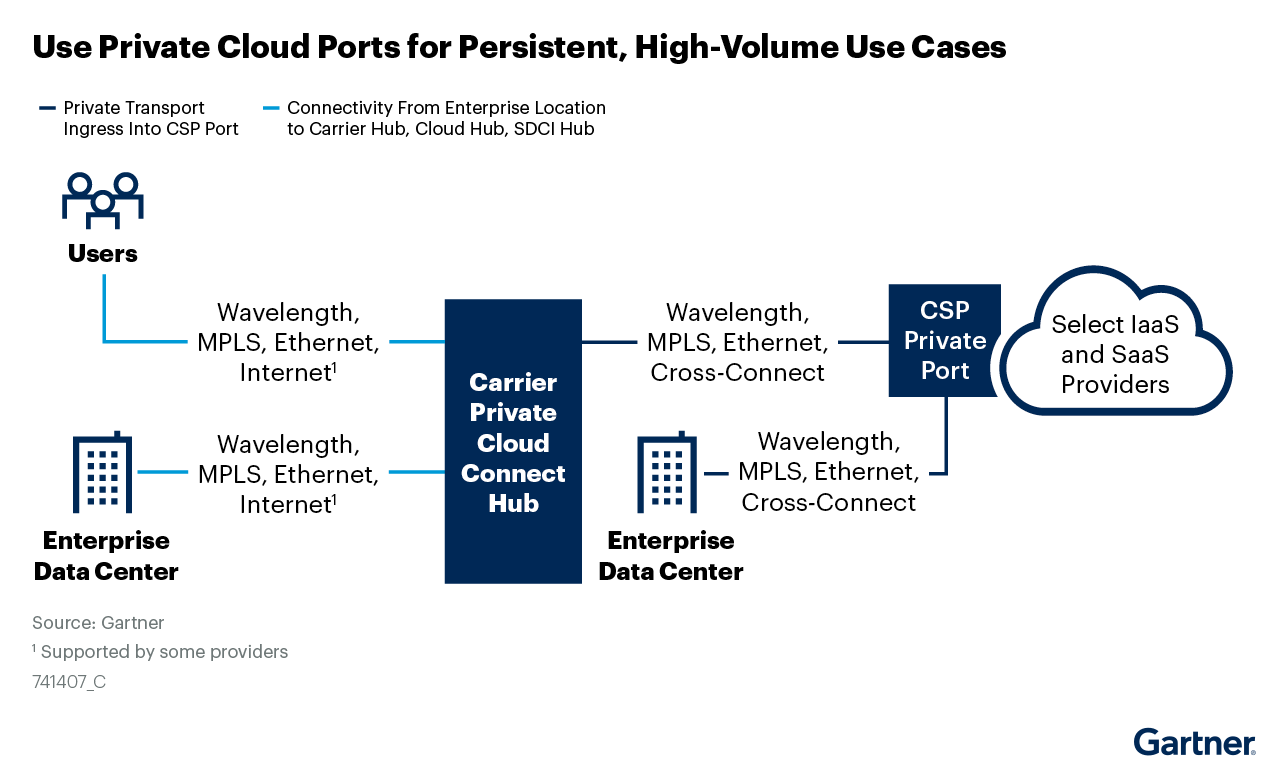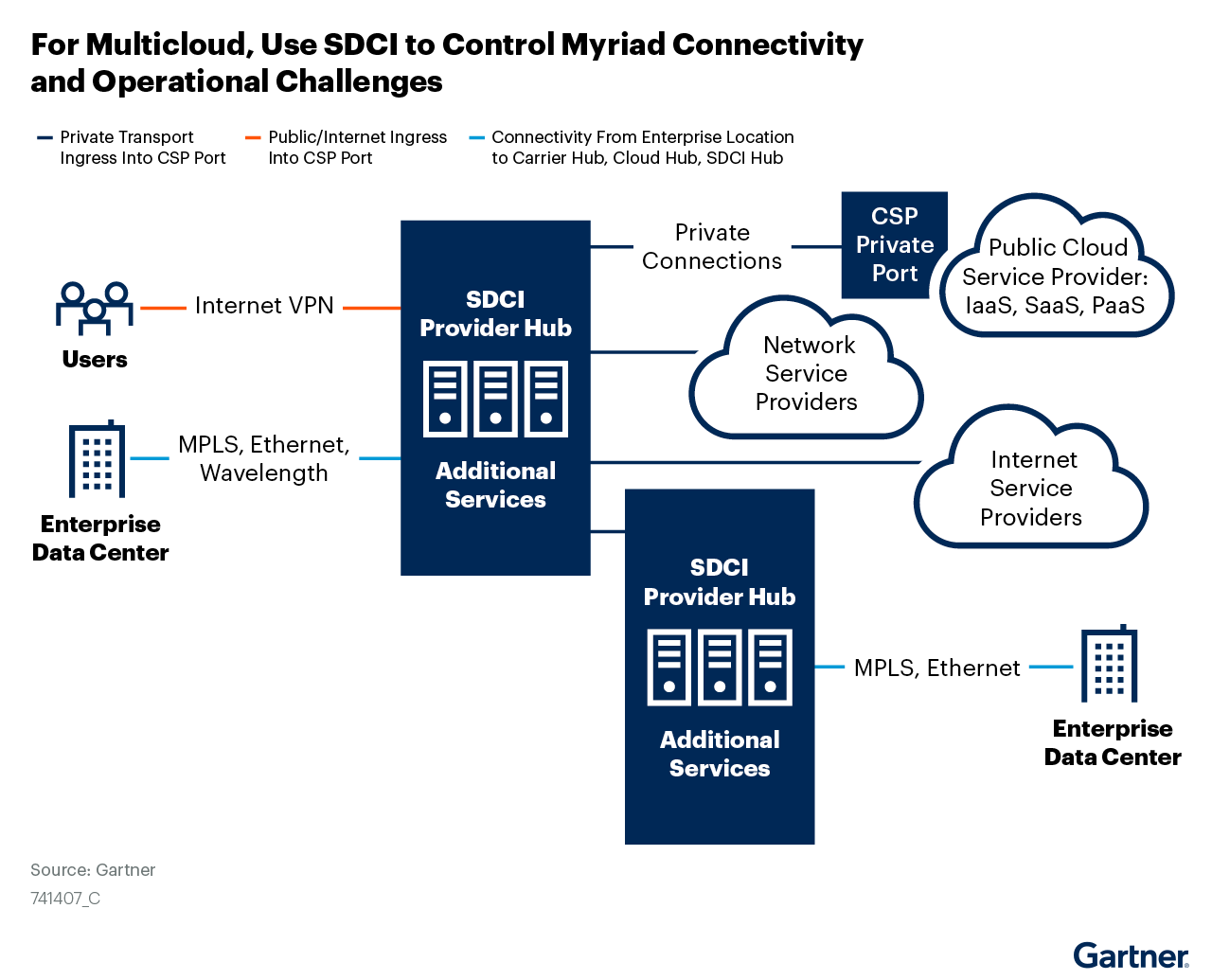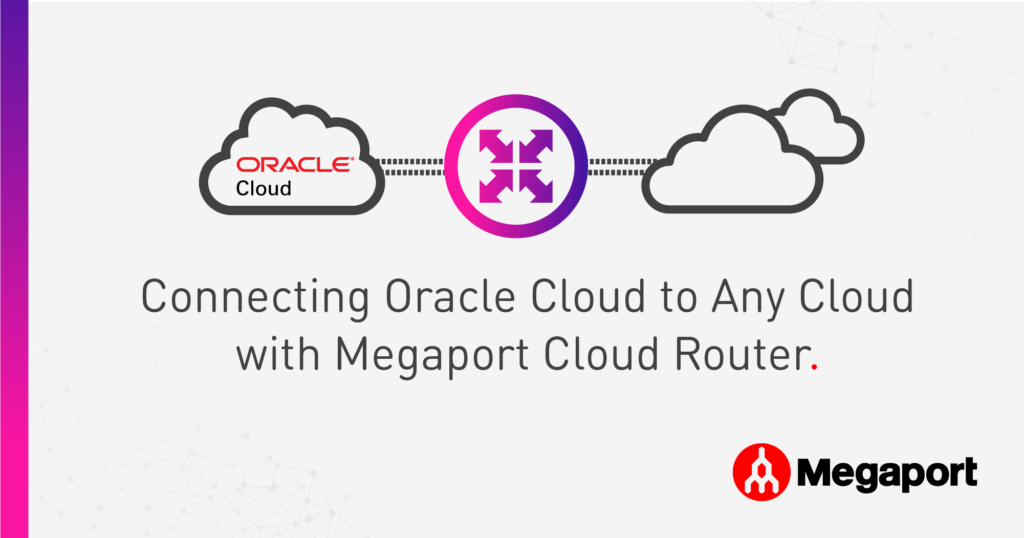
Comparing Your Multicloud Connectivity Options
- Cloud networking
- September 12, 2023
- RSS Feed
By Henry Wagner, Chief Marketing Officer
As multicloud adoption surges, so too do the choices for connecting to your clouds. We break down the key solutions and their benefits.
Multicloud has become the norm in digital infrastructure, but with it comes an uncharted set of challenges and considerations for IT teams. Oracle found that 98% of enterprises using public cloud have adopted a multicloud infrastructure provider strategy, which emphasizes that today, almost every enterprise cloud journey is a multicloud one.
So with multicloud no longer a nice-to-have, but an essential for maintaining application performance and data redundancy, it’s never been more important to assess your cloud connectivity strategy.
In this blog, we outline the popular multicloud connectivity methods, their benefits and challenges, and detail the varying use cases they suit, so you can find the right fit for your best multicloud network yet.
Contents
- What is multicloud?
- The benefits of multicloud
- Cloud interconnection and cross-cloud
- Multicloud connectivity options
- Megaport for multicloud
What is multicloud?
Multicloud, put simply, refers to strategically contracting cloud computing services from more than one provider – whether that be data migration and storage from CSPs (cloud service providers) such as Amazon Web Services (AWS), Microsoft Azure, Oracle, or Google Cloud, or using multiple Software as a Service (SaaS) applications like Salesforce or Workday.
A multicloud strategy can include some or any combination of the following:
- Multiple cloud vendors
- Multiple cloud accounts
- Multiple cloud availability zones
- Multiple cloud regions or premises.
Multicloud refers to having more than one cloud connection to different vendors, while in contrast, hybrid cloud is any combination of on-premises hardware and public and private clouds (so yes: You can have a hybrid, multicloud infrastructure).
We answer more multicloud FAQs in our complete guide.
The benefits of multicloud
Why would you want to connect to multiple cloud providers, though, if most CSPs offer a complete suite of capabilities? Isn’t that too big a hassle?
As Melanie Posey, Research VP at 451 Research explains, “The ‘one-stop-shop’ mentality has died when it comes to the cloud. Instead, multicloud is the reality of enterprise technology environments as these organizations seek to get the right mix of solutions and capabilities they need to operate effectively.”
Essentially, it comes down to the primary goal of multicloud: To provide “best-of-breed” flexibility to operate with the best environment for each workload.
For example, you may want to store your and your customers’ confidential data in a more secure, protected private cloud environment, while storing gigabyte-heavy video and photo content in a more affordable public cloud. By using multiple clouds, you open yourself up to the combination of exact speeds, performances, geographical locations, and compliance requirements you may need.
As well as freedom of choice, there are several further benefits to adopting and leveraging a multicloud strategy.
These include:
- Disaster recovery and redundancy – By having established backup and recovery processes with your suite of multiple clouds, you hedge your bets. If one cloud provider suffers an outage incident and goes offline, you can failover to another of your integrated clouds. This prevents nasty surprises like data loss, and less downtime = less interruptions for your business.
- Bolstered security and regulatory compliance – Ensure your workloads meet security compliance requirements that are mandatory among some countries and industries by opting for CSPs that support these. This is particularly of interest for government and financial services that deal with sensitive information. Learn more tips and tricks in our blog, Multicloud Security: Challenges and Solutions.
- Lower latency and improved performance – With an interconnected multicloud network, the cloud region closest to end users can deliver the data, minimizing latency and improving performance. Virtual cloud routers like Megaport Cloud Router (MCR) can be deployed to shorten the path between applications and users, which is especially useful for businesses operating across multiple branches or locations.
- Avoid vendor lock-in – When you become too dependent on a single cloud, you can face cost and interoperability issues, as well as prohibitive lock-in contracts. With a multicloud approach, you’re not tied to a single service provider, and instead can build anywhere, and fast.
- Cost savings – Minimize your IT spend by scaling bandwidth up and down as you need, and strategically combine application and performance needs across different clouds offering varying prices.
- Innovation – Leverage new technologies and features released by CSPs, including artificial intelligence and machine learning, to improve your capabilities and avoid being left behind.
Cloud interconnection and cross-cloud
While you can effectively use multiple clouds as they are and maintain numerous distinguished tenancies (or “siloes”), you can take more steps to further improve performance, optimize costs, and strengthen security through cloud interconnection and cross-cloud.
By interconnecting your clouds, you can route traffic in between them, allowing your suite to inter-communicate directly. This can be done through a virtual cloud router like Megaport Cloud Router (MCR), wherein an enterprise uses a Network as a Service (NaaS) provider like Megaport to spin up a virtual device that routes traffic between multiple cloud environments, reducing hairpinning back to data centers and therefore speeding up your networking.
Cross-cloud specifically refers to using multiple cloud platforms or services to run a single application or workload. As VMWare’s Dave Wolpert explains, “With cross-cloud, application development takes on a new life. SaaS providers can build applications on top of a cloud data platform and, by nature, access and use data from any public cloud.”
This resolves two issues: Data ownership, and time to deploy. These solutions allow for enhanced freedom and flexibility across your multicloud.
Multicloud connectivity options
1. Public internet connection to CSP
The most common way to connect your WAN to the cloud is to use a public internet connection to a cloud service provider. There are two ways to do it, and both use a VPN. The most basic method is to run a VPN tunnel from your on-premises infrastructure to the cloud service provider’s network VPN.
The other way is to deploy a virtual SD-WAN image within a CSP’s network and connect to that image using a VPN tunnel from the enterprise network location.
Benefits
The public internet can provide an affordable and easy solution for businesses performing low-risk activities in the cloud, such as sending emails or other operations that don’t place confidential or critical data at risk. It can also be a preferred tool for migrating small, one-off workloads in single regions between clouds, although it is recommended that a VPN is used as a security buffer.
While public internet alone is not recommended, when used alongside a private solution (or when public cloud is used in combination with private cloud for a best of both worlds solution), it’s a good option for businesses looking to quickly and easily perform basic network functions, or build the foundations for a more sophisticated setup.

Challenges
There are many potential pitfalls to running VPN tunnels over the internet to the public cloud. Chief among these weaknesses are scalability and complexity. Gartner writes that this method gets “increasingly complex when dealing with many CSPs.”¹
When you’re managing hundreds of applications in a half-dozen or more clouds in many sites, you’re quickly talking about managing hundreds of VPN tunnels. Gartner goes on to highlight that the public internet connection to CSP method “doesn’t scale well with many CSPs, and it has limits in terms of visibility and control.”¹
Further, using the public internet limits control and can significantly decrease performance.
Should you avoid using the public internet? We discuss in our blog.
2. Private cloud ports and private dedicated connections
Another way to connect your WAN to the cloud is to purchase private cloud ports from your CSPs. These are also called dedicated connections, with popular offerings including AWS Direct Connect, Microsoft Azure ExpressRoute, and Google Dedicated Cloud Connect.
A great way to compare public versus private cloud connections is to think of them like roads. An unsupported public connectivity method is like a public road. You don’t have any protection or privacy, so you can be targeted in road rage incidents. You’re sharing the road with many other cars, so peak hour often leads to traffic fluctuations or delays. You also pay a set toll to use the road, while nothing about it can be changed or customized by you.
Now think of private connections like dedicated connections or NaaS as a private road, built just for you. No other cars can share the road with you, meaning there are no road rage incidents; in other words, you’re protected and secure. You won’t be delayed by traffic jams, meaning great reliability and performance.
Plus, you can change the size of the road (or bandwidth, in this case) depending on how many cars (data packets) you want to send down the road, providing scalability.
And if you want to grow your network or connect different roads to each other, you can build more roads on demand, giving you the flexibility to easily grow over time alongside your business’ changing priorities and needs.
With its range of advantages in comparison to public solutions, Gartner anticipates that demand for private cloud port services will continue growing steadily at a 20.3% CAGR through 2024.

Benefits
As mentioned in our analogy, private connections can provide better performance and security than public internet connections to those clouds. This is because they are, of course, private, as well as being direct and managed by the hyperscaler, and therefore less vulnerable to BGP hijacking over the public internet or other cybersecurity risk.
Challenges
The major limitation of this method becomes obvious when you apply it to your multicloud. The connections are one-to-one, meaning that you must configure a private connection on your end of the infrastructure in the form of an MPLS circuit, an Ethernet connection, or a digital cross-connect service inside a data center or provided by a carrier. The use case for private cloud ports is best suited for high-traffic applications that are best hosted with one cloud.
So, if you’re a part of the 98% of enterprises that have adopted a multicloud strategy to connect to their public clouds, you might need a method that is 1. more flexible, and 2. more scalable. This is where private cloud hubs and SDCI providers come in.
3. Private cloud hubs
Private cloud hubs are typically offered by data center or colocation providers. These hub-and-spoke models provide one-to-many private connectivity on a permanent or semi-permanent basis to IaaS, SaaS, internet service providers, and network carriers. There are numerous private cloud hubs to choose from in the colocation industry. Many of the large data center operators claim to offer easy, pre-provisioned private connections to multiple cloud providers.
Benefits
Cloud hubs are best suited to clients that connect with multiple providers on a permanent basis, and are comfortable dealing with multiple CSPs’ administrative, financial, monitoring, and management and security requirements. Ideally, clients prefer not to manage this many independent connections and would be “well-served to connect to a single provider and, from there, connect to multiple CSPs”1 (Gartner). Cloud hubs offer this.
Challenges
The catch is, of course, you have to colocate within the four walls of the data center operator to access their private cloud hub. And if you’re connecting to numerous CSPs for your multicloud strategy, you’ll have to manage security, billing, and SLAs with each and every one of those cloud providers. The data center operator won’t be able to help you there.
In short, you’ll likely be paying a fairly high price for the flexibility and convenience of connecting to multiple clouds in one place if you’re not already colocated in the private cloud hub’s data centers.
4. Private Software-Defined Cloud Interconnection
A similar method to using private cloud hubs is using Software-Defined Cloud Interconnection, or SDCI, instead.
Assumed by Gartner, “By the end of 2024, 30% of enterprises will use SDCI services to connect to public CSPs, which is an increase from fewer than 10% in 2020”1. With SDCI, you can establish short-term or long-term private connections to many different cloud providers in a simple point-and-click manner.
These network connections are pre-provisioned across numerous data center operators, so like cloud hubs, you’re not limited to the four walls of a single colocation provider.
When it comes to SLAs, SDCI providers essentially act as network service providers offering their own SLA so their customers don’t have to deal with numerous cloud providers with different technical and administrative needs. The SDCI provider’s network is tightly integrated with the networks of the major CSPs, making it easy for customers to quickly turn up multicloud connections.
Gartner’s recommendation for enterprises is to “Use Software-Defined Cloud Interconnection (SDCI) to enable multicloud use cases or to improve connectivity flexibility, management simplicity and performance.”
Read the case study: MVE with Cisco SDCI for a future-proof network.
Benefits
SDCI has some key advantages over connecting to multicloud that the other network connectivity methods to public clouds don’t have. Like cloud hubs, SDCI services connect to many providers and carriers, but private connectivity is typically virtualized. This makes it more flexible to support small to large port sizes to providers, as well as both short-term and long-term connections to CSPs.
SDCI services also often provide access, WAN connectivity, and ancillary services to simplify the multiplicity of security, billing, and performance requirements encountered with the prior connectivity alternatives.

Megaport for multicloud
Since 2020, many enterprises have used SDCI to bridge SD-WAN sites and Points of Presence (PoPs) to clouds through Megaport (an SDCI provider) and our key partner, Cisco.
SDCI assists edge computing, too, by deploying at edge locations without additional hardware. Choosing SDCI as the access point can give enterprises more control in their cloud spend and provide insightful data connected to cloud waste – a key step in reducing it.
The easiest way to get started with multicloud, however, is to use NaaS, which gives you access to any cloud you wish in nearly any cloud region in the world, via an on-demand portal, just like Megaport’s.
Rather than set up a VPN, which has bandwidth and reliability constraints, or turn up individual connections to each public cloud, you can do everything in one place – it’s as simple as point, click, connect.
With Megaport Cloud Router (MCR), you can enjoy a secure and scalable way to connect your suite of clouds with a dedicated private connection, offering full cloud-to-cloud connectivity.
This means your data can move between your various cloud architectures directly, without having to stop off at a data center first (known as hairpinning) – reducing latency and time, as well as giving you control over your bandwidth and architecting your multicloud network for redundancy in case of disaster.
Without relying on physical infrastructure, customers can leverage cloud-to-cloud networking, private peering between leading public cloud, IaaS, and SaaS providers, and direct connectivity to any provider on the Megaport SDN. Customers can spin up Virtual Cross Connects (VXCs) on demand or access Megaport’s Points of Presence (PoPs) which are in hundreds of data centers across 25 countries, creating private and vendor-neutral connectivity.
As your multicloud network grows more complex, managing it shouldn’t. That’s why Megaport can help you manage the time, cost, and performance of your cloud connectivity, whether your IT infrastructure calls for hybrid, multi-region, cloud-to-cloud, or edge connectivity capabilities – because no two multicloud networks are the same.
Multicloud connectivity solutions, all in one place - find the best one for you here.
Note 1 – Gartner, How to Optimize Network Connectivity Into Public Cloud Providers, By Lisa Pierce, Danellie Young, Jonathan Forest, 19 February 2021.
Gartner does not endorse any vendor, product or service depicted in its research publications and does not advise technology users to select only those vendors with the highest ratings or other designation. Gartner research publications consist of the opinions of Gartner’s Research & Advisory organization and should not be construed as statements of fact. Gartner disclaims all warranties, expressed or implied, with respect to this research, including any warranties of merchantability or fitness for a particular purpose.
GARTNER is a registered trademark and service mark of Gartner, Inc. and/or its affiliates in the U.S. and internationally and is used herein with permission. All rights reserved.


